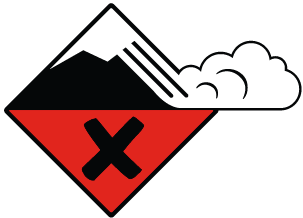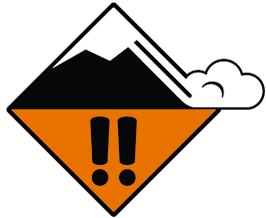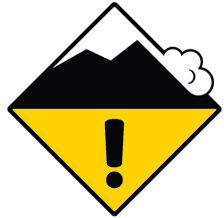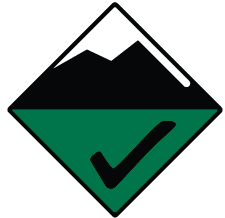Avalanche Awareness
Avalanches are a matter of timing. A steep slope can be safe one day, but unsafe the next day due to changing weather and wind conditions.
-
Always review the user instructions provided with your safety equipment and follow the recommendations for maintenance, testing and use. Always test your safety equipment to ensure it works properly before riding in mountainous terrain.
-
Always store your survival gear in your backpack and wear the backpack. Do not store your survival gear on the snowmobile.
-
Always research current avalanche conditions in your area of operation before riding. Check with local law enforcement, resort or lodging personnel, gas station attendants and other riders to learn about current conditions and any advisories in the area.
-
Read and understand the avalanche danger scale. Pay attention to any danger level warnings issued for your area of operation.
-
Always remain alert while riding in mountainous terrain. Be aware of snowpack conditions above you as you ride. Avalanches can occur at any time regardless of current condition reports.
North American Public Avalanche Danger Scale
Avalanche danger is determined by the likelihood, size and distribution of avalanches.
| Danger Level | Travel Advice | Likelihood of Avalanches | Avalanche Size and Distribution | ||
|---|---|---|---|---|---|
|
5 Extreme |

|
Avoid all avalanche terrain. |
Natural and human-triggered avalanches certain. |
Large to very large avalanches in many areas. |
|
|
4 High |

|
Very dangerous avalanche conditions. Travel in avalanche terrain not recommended. |
Natural avalanches likely; human-triggered avalanches very likely. |
Large avalanches in many areas; or very large avalanches in specific areas. |
|
|
3 Considerable |

|
Dangerous avalanche conditions. Careful snowpack evaluation, cautious route-finding and conservative decision-making essential. |
Natural avalanches possible; human-triggered avalanches likely. |
Small avalanches in many areas; or large avalanches in specific areas; or very large avalanches in isolated areas. |
|
|
2 Moderate |

|
Heightened avalanche conditions on specific terrain features. Evaluate snow and terrain carefully; identify features of concern. |
Natural avalanches unlikely; human- triggered avalanches possible. |
Small avalanches in specific areas; or large avalanches in isolated areas. |
|
|
1 Low |

|
Generally safe avalanche conditions. Watch for unstable snow on isolated terrain features. |
Natural and human-triggered avalanches unlikely. |
Small avalanches in isolated areas or extreme terrain. |
|
|
Safe backcountry travel requires training and experience. You control your own risk by choosing where, when and how you travel. |
|||||